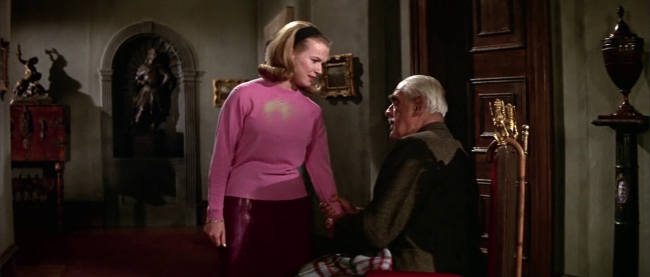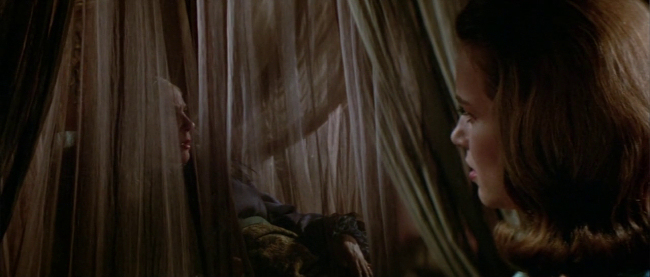
In 1927, a story by H.P. Lovecraft called "The Colour Out of Space" introduced readers to an innovation in horror, its conception of madness caused by contact with fundamentally alien phenomena was weird and eerily, undeniably insightful. In 1965, the story was adapted as Die, Monster, Die!, a tale about how a disease turns people into monsters that want to kill people and about how a young man has to find the courage to save a helpless, pretty young woman. It's an entertaining, slightly campy film with beautiful sets that probably would be a lot more enjoyable if one has no knowledge of Lovecraft's superior short story.
Maybe Lovecraft wouldn't have hated everything about the film, I suspect the unabashed Anglophile would be somewhat delighted by the idea of his fictional town of Arkham being moved to Britain. Elements like the bizarre, large plantlife growing in the area of the "blasted heath" and the deformed animals are also kept. A term Lovecraft borrowed from Macbeth, instead of a heath blasted by winds or battle, Lovecraft literally blasted his heath, rendered in Die, Monster, Die! in a couple really bad matte paintings.

It looks like to-day Bert has been drawing the blasted heath on the side walk and Mary Poppins has let us jump in and explore.
The protagonist is Stephen, played by Nick Adams like a perpetually irate TV cop, the only American character in the film. He's come to England to hook up with his former classmate, Susan (Suzan Farmer). But no-one in town will tell him how to get to her home, a reluctance to confront the topic which made more sense in the story when it was an all but abandoned farm house. In the movie, as in Corman's adaptation of The Case of Charles Dexter Ward, a humble abode has become a sprawling, gothic manor.

A really lovely one with intricate sets. Dig the model ship in the background of this shot:

That's no ordinary prop but it's never even mentioned.
Nahum, from humble farmer, has been upgraded to a gentleman played by a wheelchair bound Boris Karloff who's intent on harnessing the terrible alien power. His wife, Letitia (Freda Jackson), confines herself behind the shrouds of a grey canopied bed and begs Stephen to take her daughter, Susan, away from the house.

Susan is possibly the single biggest problem with the film, a perky, happy college student in bright pink clothes she's somehow maintained almost total ignorance of the weird shit going down around her until Stephen shows up to irritably lead her around and point things out to her. The happy little lady is like an earnestly drawn Marilyn Munster.

Director Daniel Haller also has a distracting tendency of using false deep focus shots--deep focus meaning things in foreground, middle ground, and background are all in focus. But technology didn't permit deep focus compositions keeping extreme foreground and background simultaneously in focus. Orson Welles got around this in Citizen Kane by creating subtle process shots, combining two sequences of footage. William Wyler later used this technique in movies like 1961's The Children's House. In Die, Monster, Die!, Haller employs this technique with no restraint, resulting in perplexing artificial shots like this one:

Here Stephen's just asking a shop keeper the way to the Witley place, did this need to be deep focus so badly?
There's certainly a lot of fun to be had in this film and it's great seeing Boris Karloff still creating atmosphere even confined to a wheelchair most of the time (and inexplicably finding his way up staircases off screen). But do yourself a favour and read "The Colour Out of Space" before seeing this.

No comments:
Post a Comment